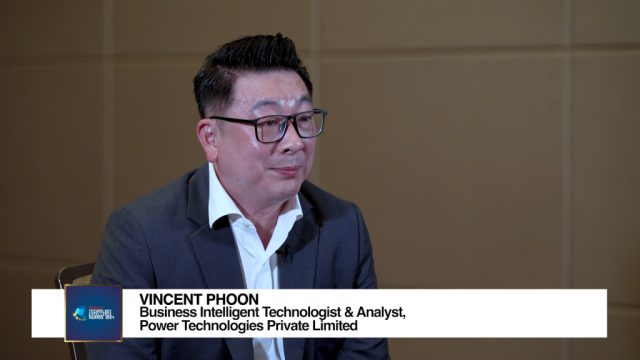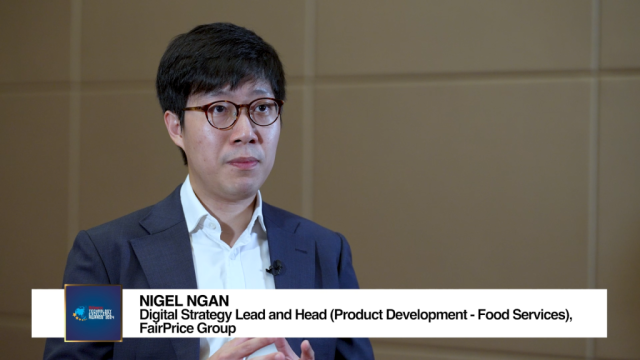How firms compete on customer experience in Singapore
By Dr Raymond TeoService excellence is the buzzword these days and companiesin Singapore relentlessly seek ways to raise their customer service levels, believing this to be the key to better marketplace outcomes. But is this sufficient?
In situationswhen there is a lack of differentiation among products and services offered by companies in an industry, customer service is indeed a differentiating tool. This explains a rush by companies to pursue this end, and those that excel at this emerge the growth winner. Companies such as Singapore Airlines, Canon and Four Seasons hotel are some of those that have done well in this area.
However, good customer service alone may be inadequate for the next lap of the race. As more companies recognize the need for good customer service and plough more resources to raise their customer service levels, service convergence will ensue.
There are already signs of service level convergence among top hotels, airlines, airports and companies in many other industries. In the hospitality industry for instance, it would be difficult to differentiate between the services of Marriott, Ritz Carlton and Hyatt. For these companies, good customer service is not enough.
The winners of the next lap will belong to companies that not only excel in customer service, but who alsosystematically plan fora superior customer experience.
Unlike customer service, which is generally determined by the quality of interaction between a service provider and its recipient at a point in time, customer experience arises through interaction between the two parties over a sequence of episodes.
This is akin to a theatre goer’s experience being determined not only by the quality of the actors in the performance but how the sequences of acts are played out. Singapore’s Changi airport, which had been voted as the world’s best airport by Skytrax four times, is one company that had planned for that superior experience to be delivered.
While the airport strives to improve on its operational efficiency, it also ensures that its check in-to-flight departure process is carefully mapped for a great traveler experience.
Its duty free shops are world class. Internet services are free, and so are foot massage services. Movie theatres screen blockbuster movies for free. In addition, travelers in transit may also stroll through its butterfly garden in the airport.
Working Towards Better Customer Experience: The Stages
Generally, companies cannot take the customer experience leap in one step. It is recommended that this be done in a three-stage process (See Figure 1).
Stage 1: Service Defect Rectification
Companies should first aim to rectify all service defects before working on customer experience related activities. While many companies think they have transcended this stage, research findings show otherwise.
In a study by Bain & Company, the findings revealed that while eighty percent of companies surveyed believed they had provided superior customer service, only eight percent of customers thought the service they received was superior.
Clearly, there is still much work for companies to do at this stage. Complaints and other customer feedback instruments are useful tools for companies to identify service defects and subsequently to work towards their rectification.
Other more proactive tools such as the critical incident technique, the sequential incident technique, and the switching path analysis technique would also serve this purpose.
One should note that rectifying service defects does not necessary bring about customer satisfaction. It merely prevents dissatisfaction.
For instance, a non-functioning air conditioning system in a hotel room brings about dissatisfaction to the guest, but a functioning system does not lead to the guest’s satisfaction.
The guest expects the system to be functioning and, therefore, no incremental satisfaction can be achieved through this. Many companies have a misguided notion that the absence of negative feedback implies good service and therefore will translate into higher levels of customer satisfaction. This view should be corrected.
Stage 2: Selective Service Excellence
A company is ready to progress to this stage if it has a good service rectification programme in place and if service defects are minimal. In this stage, the company aims to identify service areas that bring about customer satisfaction (See Figure 2).
For instance, it is generally considered that staff responsiveness belong to this category of services. A staff who is not responsive to guest needs bring about customer dissatisfaction.
On the other hand, a highly responsive staff raises customer satisfaction levels. Achieving service leadership in these areas is the key to raising customer satisfaction.
However, the process of identifying service areas belonging to this category is less straight-forward. Data modeling by skilled analytical specialists utilizing survey information is necessary. This challenge should not prevent companies from pursuing this end as it is always possible to outsource this function to specialist data modeling firms.
Data modeling of IKEA’s customers showed that of the many service areas that can contribute to their customers’ satisfaction, in-store experience has the greatest impact. As a consequence, the company made exceling in this its number one priority.
Stage 3: Customer Experience Management
Customer experience management resides at the top of the customer experience pyramid. Many companies working on customer management issues already have good systems in place to address the service issues lower down the customer service pyramid (service defect rectification and selective service excellence).
IKEA and Singapore’s Changi Airport are examples of companies belonging to this category.
Customer experience management requires companies to deliberately plan for a sequence of interacting episodes between the service provider and its customers to delight the customer. Practitioners call this service process mapping (See Figure 3).
A simple and effective way to do this is for a company to compartmentalize its current service process into broad stages (called scenes here). For instance, the passenger departure process in an airport can generally be divided into three scenes; arrival at the airport (Scene 1) ; in the holding area of the airport (Scene 2) ; and boarding the flight (Scene 3).
Once the scenes are mapped out, the service experience analyst can then attempt to identify the acts within each scene. For instance, the arrival scene at the airport can include acts such as looking for the ticket issuing counter, counter staff asking security questions, issuance of boarding pass etc.
A skilled team is required to improve on the sequencing of scenes and excel in the acts within each scene. Again, companies can either perform these tasks themselves or seek the help of specialist firms.
Last but not least, companies working on customer experience enhancement should ensure there is a high degree of alignment of their organizational cultures, employee motivation and reward systems, and at times even the use of technology to achieve this end.
Two Cases: One That Had Made It and Another In the Process of Making it
Is it possible for companies to reach the pinnacle of customer experience as described in this article? Two companies are presented.
The first company Enterprise Rent-A-Car is chosen to illustrate a company that has become the number one car rental company in the world by adhering to the principles of customer experience.
The second company, Coronado Realty Advisors Florida Property Management, is a small property management company in the US but built on the same pillars found in Enterprise Rent-A-Car.
Enterprise Rent-A-Car
Enterprise Rent-A-Car was founded in 1957 by Jack Taylor. Despite being a late entrant in the car rental industry, it became the largest car rental company in the world, with its holding company Enterprise Holdings having an annual revenue of $14.1b.
The company adheres to a customer centric culture, and with its founder’s unrelenting efforts to make customer satisfaction the foremost priority in the company, it quickly rose to its current position.
Today, Enterprise is helmed by his son Andy Taylor but the company had never wavered from the core business philosophy of its founder ‘Take care of our customers and employees first, and profits will follow.’
Andy made it clear that any Enterprise employee whose satisfaction score did not exceed the average of the company will not be promoted. The company has a good customer service process but more importantly, its culture and its staff reward structure are completely aligned toward achieving great customer experience.
Coronado Realty Advisors Florida Property Management
Property management agents in global cities such as London tend to be outward looking, and offer a suite of services to international clients who do not stay in the country but invest in it. The intense competitiveness in these cities brings about customer first attitude in its managing agents.
In contrast, until the recent economic crisis, considered the worst since the Great Depression, many property investors in the United States are people living in the country and are familiar with its regulatory framework.
As a consequence, smaller property management firms in the US tend to be inward looking with an array of services meeting the needs of domestic investors and home owners, but not adequate for international investors, whose needs are far wider.
The fall in prices of real estate in the US after the crisis brought about a flood of foreign property investors into the country. The complicated US regulatory systems meant these investors had to rely heavily on the management agents to assist in ownership and rental management issues. But inward looking management agents made this a frustrating experience for the investors.
Coronado Realty Advisors, a property management company based in Florida and services that market, differentiated itself from the rest. The company was founded by Daniel Carless with a clear goal ‘In everything we do, we strive to provide peace of mind through excellence in management and service’. The company manages its clients’ properties as if they were its own.
For instance, multiple repair quotes are obtained and the best recommended to its clients. There was a high level of personal touch. Its commitment to clients paid off. In 2012 alone, the number of property owner clients grew 110%, and was contributed largely by advocates of the company referring their friends to it. To this day, it retained 100% of its clients!

























 Advertise
Advertise









